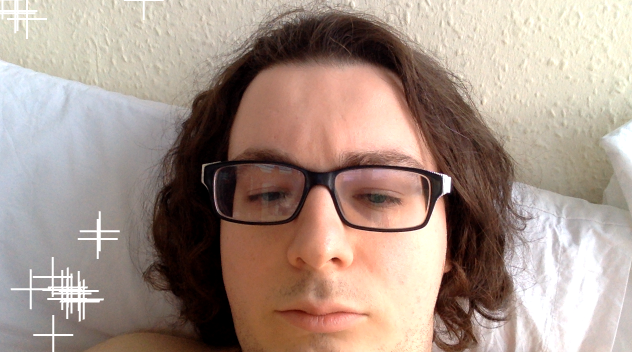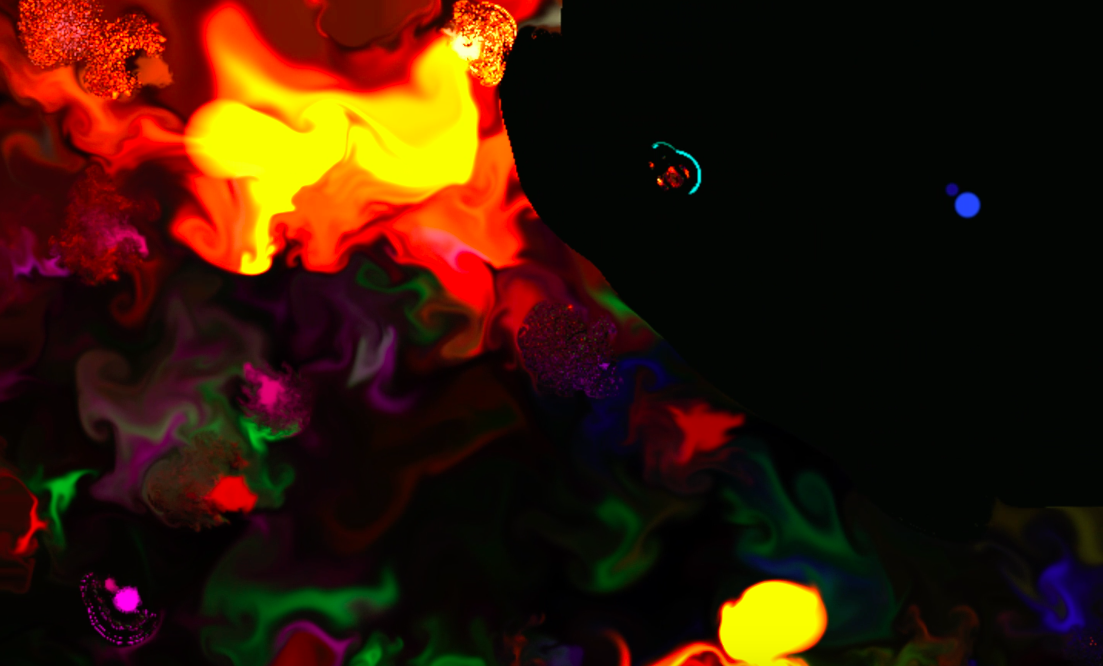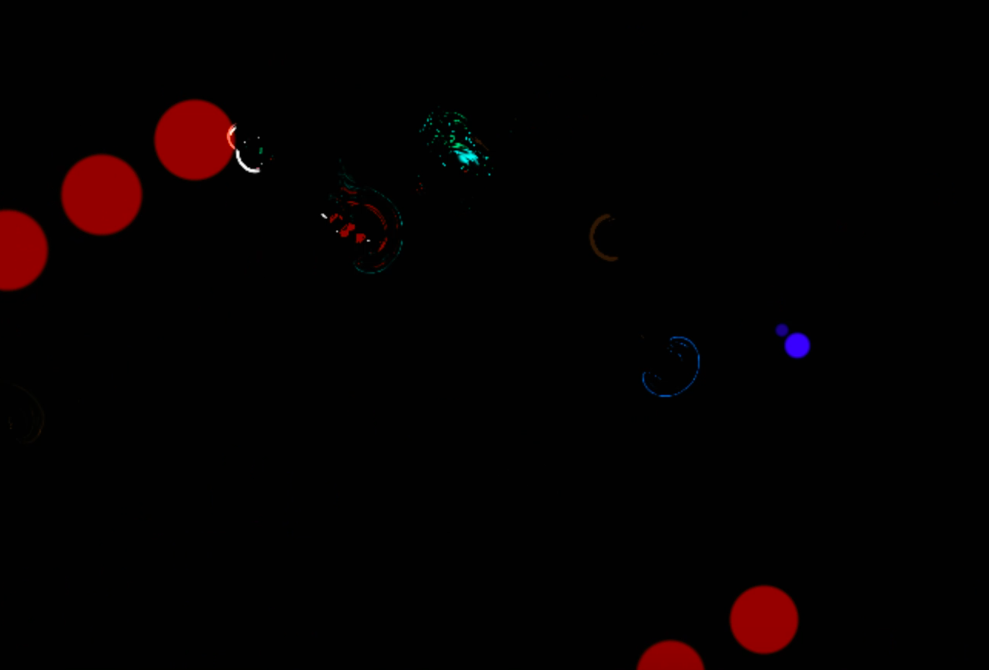Aura We Seek
By
Ilya Sipyagin
This project presents the imitation of visual possibility to represent energies which are hidden for human eyes, through simple sensors of the machine. “Aura We Seek” or “Aura detector” is a graphical application which producing sources of fluid glow when tracking the outlines of the objects.
The Concept and choice of interaction.
“A strange weave of space and time: the unique appearance or semblance of distance, no matter how close it may be.”-Walter Benjamin.
I was highly inspired by the techniques of Kirlian photography or CDP and at the same time by the spiritual concept as theosophical analysis of Chakra.
So the concept of “elan vital” existed from ancient times starting from ancient Hinduism and Cabal practises and have been modified and segregated by western approaches and taken even further by
the modern New Age movement. “In 1939, Semyon Davidovich Kirlian discovered that by placing an object or body part directly on photographic paper, and then passing a high voltage across the object, he would obtain the image of a glowing contour surrounding the object. However, studies have found that the Kirlian effect is caused by the presence of moisture on the object being photographed.” So no mystical point was found.


However the principle of this style production was inspiring me to choose the “Outliner” as the way of interaction, and here is why.
The process of taking a Kirlian photo is simple enough and does not always require the use of a camera. First, you should place a sheet of photographic film on top of a metal surface. Then, place the object that you want to photograph on top of the film. To create the initial exposure, high voltage current is applied through the metal. The electrical coronal discharge between the object and the metal plate is captured in the film. The Kirlian photograph, which shows a light, glowing silhouette around the photographed object, becomes visible as a result of developing the film. So instead of high voltage, I decided to use the computer vision through the webcam and the markers of “Outliner” as the “sources of glowing”. After some experimentation with flames(which I will explain in Colour section), I realised that output producing a frame drop so the number of trackers and their behavior was changed a couple of times. As a result, I get two different versions of output image behavior (with calibration and without( through framerate)).


With Calibration(input)


With Calibration(output)


With Framerate(input)


With Framerate(output)
Colour and static objects.
The main inspiration I took from “Silhouettes @ Saigon Ranger” show which was taken place in Vietnam 2014.
https://vimeo.com/113887700
At this particular piece, artist used a specific fork from ofxFX addon- ofxFluid. So after a quick search, I found in by this link https://github.com/patriciogonzalezvivo/ofxFluid. However, instead of using Kinect and use hands as a source of fluid, I decided to implement it into “Outliner” as I explained above.
So for color choice I decided to refer to Holistic Aura color spectrum.
RED- Relates to physical body, circulation, and heart. Divided on Muddied red(Anger), Deep red(will-power) and Clean red(energetic, sexual). As a product can be classified Pink Aura(light-pink: pure, artistic, romantic/dark pink: immature, unreliable), and Orange Red (confidence, creative power).
ORANGE- Relates to reproductive organs and emotions. The color of vitality, good health, and excitement.
YELLOW- Relates to the spleen and life energy. Refers to inspiration, intelligence and action shared, playful, optimistic.
GREEN- Relates to heart and lungs. It is a very comfortable, healthy color of nature. When seen in the aura this usually represents growth and balance. Love of people, animals, nature. However, Dark-Green refers to jealousy, resentment, and feeling like a victim of the world.
Turquoise-Relates to the immune system.Sensitive, compassionate, healer.
BLUE-Relates to the throat, thyroid. Cool, calm, and collected. Caring, love to help others, sensitive, intuitive. At the same Dark variation can mean fear of the future and self-expression.
BLACK - Draws or pulls energy to it and in so doing, transforms it. Usually indicates long-term unforgiveness collected in a specific area of the body, which can lead to health problems.
WHITE -Reflects other energy. A pure state of light. Spiritual, etheric and non-physical qualities, transcendent, higher dimensions. Purity and truth.
So after I described each main colour possibilities let me explain visual sources on the screen which are uncontrollable by the participant.
“TWO SUNS”: 1.Technical perspective: Two (fluid.addConstantForce) sources which produce only flame colour flow, they were added by me as the necessary multiplier which will flush and adopt field for the future colour generation, they successfully fight with Black and White waves.
2. Concept perspective: In most of the Abrahamic religions the sight of the Messiah(or global changes).
“SPARKS”: Extra (fluid.addTemporalForce ) sources which are purely random and appearing only for short amount of time at different areas of the field. At the same time the small flames that they producing, will mix with main and generated flow. As a result, the colour will be changing constantly.
From concept perpective refers to aura mutation under influence of invisible(spiritual) sources.
“WAVE OF DARKNESS”: This particular event happens when the amount of colour on the screen reaches particular number (which I haven’t been able to calculate so decided to treat it as a random event). It flushes everything on its way, not giving any colour chance to flow and showing openly the “Two Suns” cores. However, after 10-25 seconds the wave flushes back and flames can burn again.
From the conceptual point I m presenting it as global changes(mostly negative) which affects us and damage our stability, however, as the wave, they are only temporarily and after time everything will come back to normal.


Darkness Is Coming


Only Sparks Are Left


Back To Light
Conclusion.
This project can be a good starting point for creating a much more immersive experience and interaction. The main issue which I m working on right now is how to optimise the output so it will work without delays even on weak laptops. After I will solve it, the plan is to imply more complicated ways of interaction taking it to 3D media and even reproduce it as a game.
Some key point for future development:
-add “aura eaters” artificial objects which consume particular color.
-nonrandom generation of colour, which means that each view will be treated by his own parameters which will procedurally generate. (for example based on the colour of hair, eyes, size of the face, etc.)
-aura static shaping, by giving the viewer the ability to shift and contain flames inside static forms.
At the same time, I m looking for more possible visual outcomes through exploring the ofxFX addon.
Bibliography
1. Marques, A. The Human Aura: A Study. Office of Mercury. pp. 1–2 and preface.
2. “Silhouettes @ Saigon Ranger”
3. Leadbeater, Charles Webster (2012). Man Visible and Invisible: Examples of Different Types of Men as Seen by Means of Trained Clairvoyance.
4. Inyushin, V. M., Gritsenko, V. S. (1968) The Biological Essence of Kirlian effect, Alma Ata, Kazakhstan, State University.
5. Pilkington, Mark (5 February 2004). "Bodies of light". The Guardian. London.
6. https://github.com/patriciogonzalezvivo/ofxFluid.
7. https://www.dezeen.com/2017/11/25/aura-installation-translates-emotions-into-beams-of-light-studio-nick-verstand-dutch-design-week/
8. https://www.urdesignmag.com/art/2017/09/14/edoardo-tresoldi-aura-paris/
9. https://ceasefiremagazine.co.uk/walter-benjamin-art-aura-authenticity/
10. Rainer Usselmann. (2003). "The Dilemma of Media Art: Cybernetic Serendipity at the ICA London", Cambridge, Massachusetts: The MIT Press/Leonardo Journal - Volume 36, Number 5, October 2003, pp. 389–396.






























































